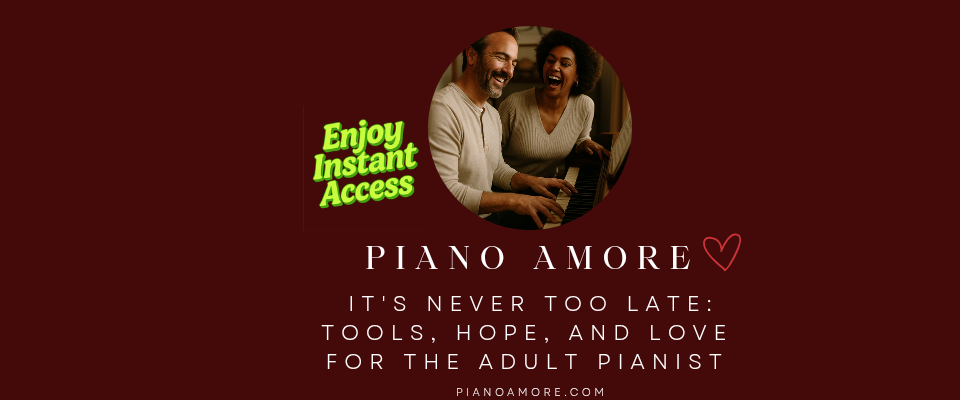When I first learned chords, they felt like fixed shapes, locked in place by tradition. But discovering chord voicings shattered that mold—and opened a door to expression I didn’t know I was missing. This post is a tribute to that shift: to questioning old truths, embracing new textures, and letting musical growth unfold through bold curiosity.
Blog
Beginner Piano Course: Instant Results Day One
A personal invitation to those who’ve always wished music could feel simple, soulful, and theirs. This is not your average beginner piano course. A Quiet Dream, a Persistent Feeling If you’ve ever walked past a piano and felt something stir—something between curiosity and longing—then you already know. That feeling of “maybe… if things were simpler……
Play Piano with No Experience: The Day Mike Stepped Into Music
Mike walked into my studio with zero piano experience and one bold desire—to sound good in front of his colleagues. Within minutes, triads turned into music, and self-doubt gave way to joy. His story proves that expressive playing doesn’t require theory, training, or time—just curiosity, courage, and a willingness to have fun.
New at playing standard tunes on the piano? When it comes to coming up with a left hand pattern, take a lesson from Beethoven…
Learn These Primary Chords First
An Introduction To The Primary Chords Why will knowing how to play your primary chords boost your confidence quickly? My decades of experience as a piano coach have made it clear to me that the majority of piano beginners want the shortest path to immediate results possible. This is understandable since even small successes breed…
How To Play Piano By Ear: A First Step
Learning How To Play Piano By Ear The process of learning how to play piano by ear is an ongoing journey that opens doors to a whole new dimension of musical understanding. Are you capable of it? You bet you are. Don’t believe it? You don’t have to believe that it’s possible. Why? Because the…
Inspiration Through Implementation
Use It, Don’t Lose It One of the biggest compliments received by ProProach members of the program is that it emphasizes the utilization of what is learned. That program places a heavy focus on learning new piano chord voicings but it doesn’t stop there. You see, it actually provides genuine examples of the techniques and…
Practicing Piano: 88 Keys To Learning
Practicing Seem A Bore & A Chore? There’s something about that word “practice” that creates a resistance within some individuals. Maybe it’s the implication of hard effort and even boredom. Change It All But it never should be like that. As a matter of fact, it ought to feel like a pleasure and privilege each…
Play Piano With Confidence
I have been conducting piano lessons in a one-on-one environment for many years. Many of these clients have been adults who already had a fair to good amount of previous experience with reading and playing the piano. Their knowledge of and ability to play chords has also been significant enough in order that they might…
Easy Way To Make Music At The Piano
No Reading Necessary! I want to put it on the table right away so there is no misunderstanding. It is not my intention to minimize the benefits of reading music. The ability to read music opens you to an entire world of wonderful possibilities. That said, let’s be real. Based on my over four decades…
